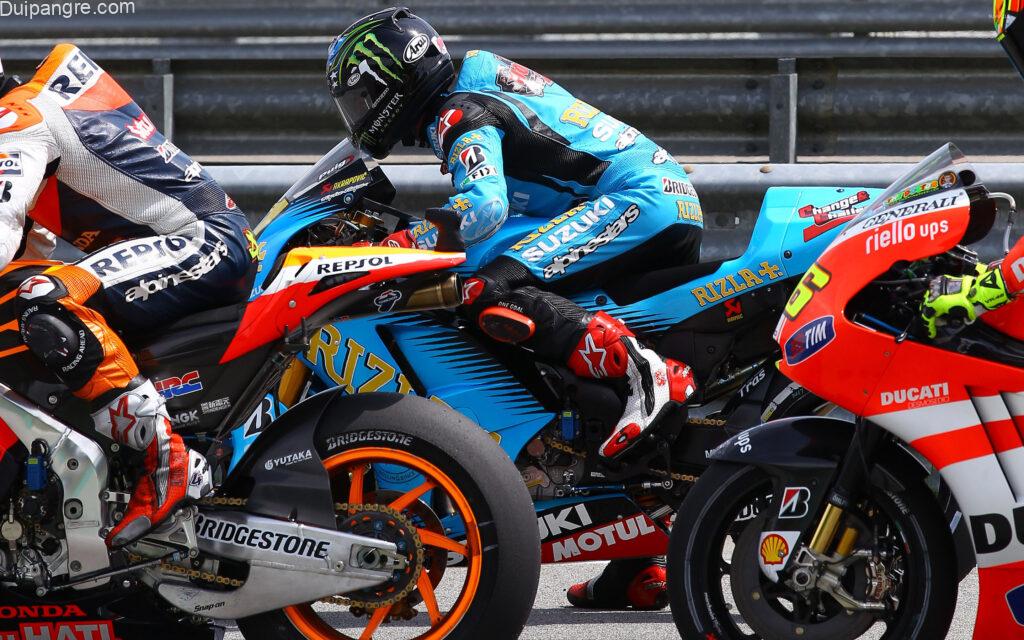
MotoGP, the pinnacle of motorcycle road racing, boasts a rich history that spans over seven decades. From its humble beginnings to the global phenomenon it is today, the sport has witnessed remarkable technological advancements, fierce rivalries, and the rise of legendary riders.
History
The roots of MotoGP can be traced back to the early 20th century when motorcycle racing gained popularity. However, it wasn’t until 1949 that the Fédération Internationale de Moto cyclise (FIM) established the Motorcycle Road Racing World Championship. The inaugural season featured races across Europe in various classes, including 125cc, 250cc, 350cc, and 500cc.
In the early years, multiple classes coexisted, each with its own set of regulations. As the championship evolved, it standardized around three main classes: Moto3 (formerly 125cc), Moto2 (formerly 250cc), and MotoGP (formerly 500cc). This restructuring aimed to streamline the competition and enhance its global appeal.

Two-stroke engines dominated the early decades of MotoGP, providing high-revving power and distinctive exhaust notes. However, as concerns about environmental impact and safety grew, the series transitioned to four-stroke engines in the early 2000s. This shift marked a significant turning point, with manufacturers investing in cutting-edge technology and design.
The 500cc two-stroke era saw the emergence of iconic riders like Mick Doohan and Wayne Rainey, who etched their names into MotoGP history. The turn of the century witnessed the arrival of a new phenomenon – Valentino Rossi. The charismatic Italian rider quickly rose to stardom, capturing multiple championships and earning the nickname “The Doctor.” Rossi’s success not only elevated his status but also brought MotoGP to a broader audience.
Expansion of MotoGP
MotoGP expanded its horizons beyond Europe, incorporating races in Asia, the Americas, and Oceania. This global footprint enhanced the championship’s popularity, turning it into a truly international spectacle. The series continued to evolve with technological innovations, including advancements in aerodynamics, electronics, and materials.

In the midst of these changes, the sport witnessed the dominance of Spanish rider Marc Márquez. Márquez’s aggressive riding style and unprecedented success, particularly in the premier class, made him a force to be reckoned with. His rivalry with Rossi and other contenders added drama and intensity to the races, captivating fans around the world.
The sport faced challenges, including the tragic loss of talented riders like Marco Simoncelli in 2011. Safety measures were continually improved to mitigate risks, emphasizing the commitment to protecting riders and ensuring the longevity of the sport.

COVID-19 pandemic
The COVID-19 pandemic in 2020 disrupted the MotoGP calendar, leading to rescheduled races and events held without spectators to comply with health protocols. Despite these challenges, the championship pressed on, showcasing the resilience and adaptability of the MotoGP community.
MotoGP continued to be a global Moto racing, with ongoing developments in technology, regulations, and the emergence of new talent. The sport’s enduring appeal lies in its combination of speed, skill, and strategy, making each race a thrilling spectacle for enthusiasts.
Conclusion
MotoGP’s journey from its early days to the present is a testament to the resilience of motorcycle racing. It has evolved from regional competitions to a worldwide phenomenon, attracting a diverse and passionate fan base. The sport’s ability to embrace innovation while preserving its rich traditions ensures that MotoGP remains at the forefront of motorsport, ready to captivate audiences for years to come.

Read:- Marc Marquez the best and youngest-ever MotoGP Champion.

Leave a Reply